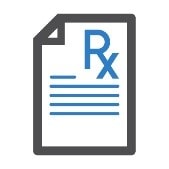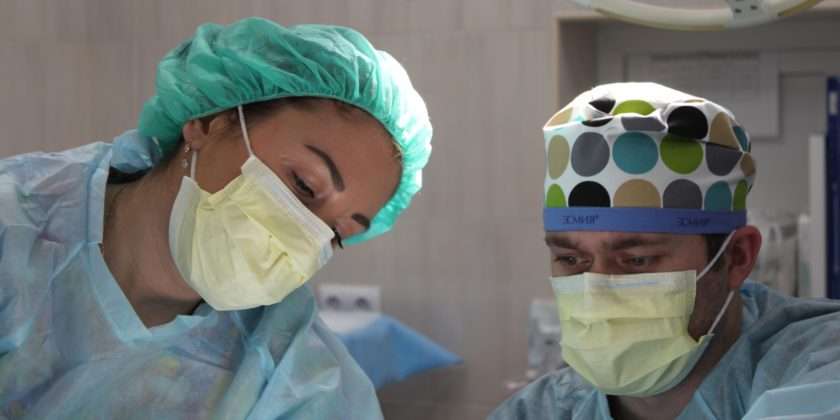You cut your foot several days ago and its starting to hurt. You are shivering and have a fever. You are short of breath and have a high heart rate. You take a Tylenol and put some antibiotic cream on the wound. You died five days later of Sepsis. This happens more often than you think. Jay Harold wrote this post, “Who’s at Risk for Sepsis & 3 Germs that Cause It” because he has seen the pain and suffering of Sepsis on a personal level.
Each year, at least 1.7 million1 adults in America develop sepsis2 . It’s been estimated that between 28 and 50 percent of these people die—far more than the number of U.S. deaths from prostate cancer, breast cancer, and AIDS combined. Nearly 270,000 Americans die as a result of sepsis. 1 in 3 patients who die in a hospital has sepsis.
Know the Risks. Spot the Signs. Act Fast3
Sepsis is the body’s extreme response to an infection4 . It is a life-threatening medical emergency. Sepsis happens when an infection you already have —in your skin, lungs, urinary tract, or somewhere else—triggers a chain reaction throughout your body. Without timely treatment, sepsis can rapidly lead to tissue damage, organ failure, and death.
What causes sepsis?
When germs get into a person’s body, they can cause an infection. If that infection isn’t stopped, it can cause sepsis.
Who is at risk?
Anyone can get an infection, and any infection can lead to sepsis. Certain people are at higher risk:
![]() Adults 65 or older
Adults 65 or older
![]() People with chronic medical conditions, such as diabetes, lung disease, cancer, and kidney disease
People with chronic medical conditions, such as diabetes, lung disease, cancer, and kidney disease
![]() People with weakened immune systems
People with weakened immune systems
![]() Children younger than one
Children younger than one
Signs
Signs of sepsis that your doctor or nurse can measure include either of the following:
![]()
High heart rate
![]()
Fever, shivering or feeling very cold
Symptoms
Symptoms of sepsis that you might experience can consist of a combination of any of the following:
![]()
Confusion or disorientation
![]()
Shortness of breath
![]()
Extreme pain or discomfort
![]()
Clammy or sweaty skin
I might have sepsis. What should I do?
If you are feeling worse or not getting better in the days after surgery, ask your healthcare professional, “Could this be sepsis?”
Similarly, if you have an infection that is not getting better or is getting worse, ask your healthcare professional, “Could this infection be leading to sepsis?”
The most frequently identified germs that cause infections that can develop into sepsis include:
Staphylococcus aureus (staph), Escherichia coli (E. coli), and some types of Streptococcus.

HOW CAN I GET AHEAD OF SEPSIS4 ?
1. Talk to your doctor or nurse about steps you can take to prevent infections. Some measures include taking good care of chronic conditions and getting
recommended vaccines.
2. Practice good hygiene, such as handwashing, and keeping cuts clean and covered until healed.
3. Know the symptoms of sepsis.
4. ACT FAST. Get medical care IMMEDIATELY if you suspect sepsis or have an infection that’s not getting better or is getting worse.
FOR PATIENTS AND FAMILIES: START THE CONVERSATION TODAY5 .
Sepsis is the body’s extreme response to an infection. It is life-threatening, and without timely treatment, sepsis can rapidly lead to tissue damage, organ failure, and death.
Below are the questions and answers you can use to start a conversation with your doctor or nurse.

How can I protect them from sepsis?”
Talk to your doctor or nurse about steps you can take to prevent infections. Some measures include taking good care of chronic conditions and getting recommended vaccines. Practice good hygiene, such as handwashing, and keeping cuts clean and covered until healed.
ACT FAST. Get medical care IMMEDIATELY if you suspect sepsis or have an infection that’s not getting better or is getting worse.
Treatment
Research shows that rapid, effective sepsis treatment includes:

- Giving antibiotics
- Maintaining blood flow to organs
- Treating the source of the infection
Doctors and nurses treat sepsis with antibiotics as soon as possible. Many patients receive oxygen and intravenous (IV) fluids to maintain blood flow and oxygen to organs. Other types of treatment, such as kidney dialysis or assisted breathing with a machine, might be necessary. Sometimes surgery is required to remove tissue damaged by the infection.
Many people who survive severe sepsis recover completely and their lives return to normal. But some people, especially those with pre-existing chronic diseases, may have permanent organ damage. For example, in someone who already has impaired kidneys, sepsis can lead to kidney failure that requires lifelong dialysis.
There is also some evidence that severe sepsis disrupts a person’s immune system, making him or her more at risk for future infections. Studies have shown that people who have experienced sepsis have a higher risk of various medical conditions and death, even several years after the episode.
More information about the long-term effects of sepsis is available from the CDC at https://www.cdc.gov/sepsis/pdfs/life-after-sepsis-fact-sheet.pdf and the Journal of American Medical Association’s Patient Pages at https://jamanetwork.com/journals/jama/fullarticle/2667724
What is the economic cost of Sepsis6 ?
Sepsis treatment is expensive. It often involves a prolonged stay in the intensive care unit and complex therapies with high costs. The Agency for Healthcare Research and Quality lists sepsis as the most expensive condition treated in U.S. hospitals, costing nearly $24 billion in 2013.3 People with sepsis are two to three times more likely to be readmitted to the hospital as people with many other conditions, including heart failure, pneumonia, and chronic obstructive pulmonary disease.4 Readmissions due to sepsis are also more expensive than readmissions due to any of these other conditions.
Jay Harold hopes you enjoyed this post, “Who’s at Risk for Sepsis & 3 Germs that Cause It”. Please Share it and read more about Jay Harold here. Please take this advice from Muhammad Ali and give back to others. “Service to others is the rent you pay for your room here on earth.”
Bibliography
- https://www.cdc.gov/sepsis/datareports/index.html
- https://www.cdc.gov/sepsis/what-is-sepsis.html
- https://www.cdc.gov/sepsis/signs-symptoms.html
- https://www.cdc.gov/sepsis/pdfs/Consumer_fact-sheet_protect-yourself-and-your-family-P.pdf
- https://www.cdc.gov/sepsis/pdfs/Consumer_conversation-starter_start-the-conversation-sepsis-P.pdf
- https://www.sepsis.org/news/new-u-s-government-report-reveals-annual-cost-of-hospital-treatment-of-sepsis-has-grown-by-3-4-billion/




